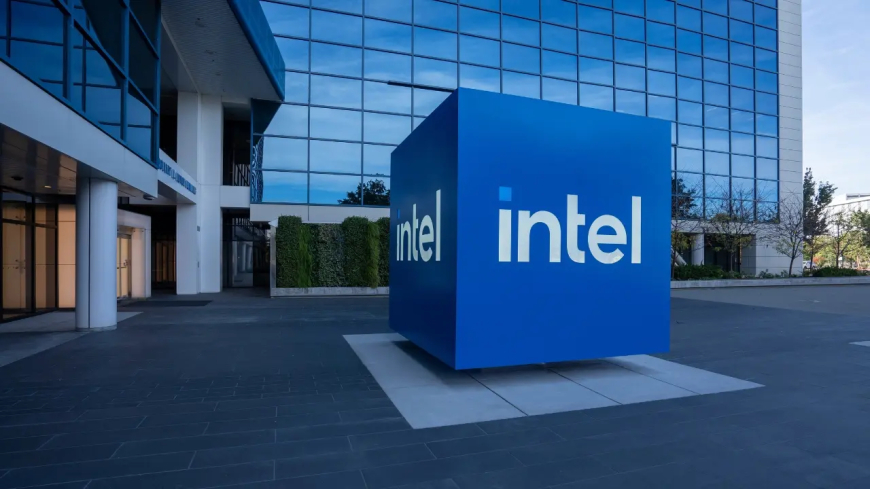Intel Cautions Investors on Risks from U.S. Government Stake
Intel warns of risks from the U.S. government’s 10% ownership stake, citing shareholder value concerns, sales risks, and regulatory challenges.

Washington, D.C. — Semiconductor giant Intel Corporation has raised red flags over potential risks tied to the U.S. government’s new 10% ownership stake in the company. While the investment aims to bolster domestic chip manufacturing and national security, Intel’s latest filings caution that it could reshape the company’s financial landscape, influence global partnerships, and create uncertainty for shareholders.
Government Stake and Strategic Implications
The Biden administration has sought to expand America’s semiconductor capacity to reduce reliance on overseas manufacturing, particularly amid growing tensions with China. The U.S. government’s stake in Intel represents not just financial backing, but also strategic oversight in areas like defense contracts and critical infrastructure supply chains.
Intel executives, however, noted that such ownership could expose the company to regulatory intervention and potentially limit its flexibility in high-stakes global negotiations. "While we welcome government support, there are risks of shifting policies and evolving conditions that might impact our core markets," the company wrote in its recent disclosure.
For context, similar government-led interventions in private industry have historically resulted in restrictions on sales to foreign partners and heightened oversight of intellectual property sharing.
Shareholder Concerns and Value Projections
Investor circles are now debating how Intel’s market value may be affected. According to Bloomberg Intelligence, government stakes often create a mixed impact: providing stability through funding but also dampening investor confidence due to concerns over autonomy.
An internal Intel forecast suggests that while federal ownership may secure billions in subsidies and contracts under the CHIPS and Science Act, it could also trim international revenues in regions sensitive to U.S. political influence. Shareholder value projections indicate potential fluctuations of up to 12% over the next three years, depending on global market reactions.
For further perspective, the U.S. Securities and Exchange Commission (SEC) notes that government involvement in corporate structures often brings long-term compliance costs that affect financial stability.
Market Reactions and Industry Comparisons
Wall Street reacted cautiously following Intel’s disclosure. Shares dipped slightly in after-hours trading, though analysts stressed that the long-term picture remains uncertain.
Tech policy experts point to historical parallels in the energy and defense sectors, where government stakes sometimes provided strategic security but at the cost of market competitiveness. If Intel faces similar constraints, rivals like AMD, TSMC, and Samsung could gain an edge in international markets.
Meanwhile, global chip buyers — particularly in Asia and Europe — are closely monitoring Washington’s involvement in Intel. Some industry insiders warn that foreign governments may redirect purchases to avoid dependency on U.S.-influenced supply chains.
Expert Analysis on Risks
Dr. Karen Michaels, a regulatory policy analyst at Georgetown University, explains:
“The challenge here lies in balancing national security interests with market dynamics. If Intel becomes perceived as a semi-government entity, foreign buyers might hesitate, and that hesitation can ripple across shareholder value.”
Independent researchers have highlighted that Intel’s exposure to artificial intelligence chips, one of its fastest-growing divisions, may also face additional scrutiny from policymakers — particularly as AI becomes entwined with defense and security concerns.
For deeper market insights, resources like Harvard Business Review emphasize that companies under partial government ownership often need to adjust growth strategies to align with policy-driven priorities.
Outlook for the Semiconductor Industry
Intel’s warning arrives at a critical time. Global demand for chips is surging, fueled by AI, electric vehicles, and cloud computing. Yet, competition is intensifying, with Asian chipmakers retaining technological dominance in advanced node manufacturing.
If Intel can leverage U.S. government support to accelerate innovation while managing regulatory hurdles, it may emerge stronger. However, if restrictions over international sales expand, the company’s global market share could stagnate.
In the coming months, investors will closely watch Intel’s quarterly earnings, U.S. policy developments, and responses from foreign trade partners. The stakes are not only financial but geopolitical, as semiconductors remain at the heart of modern economies.











